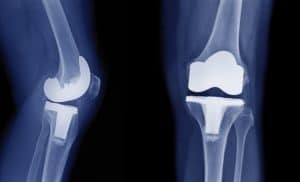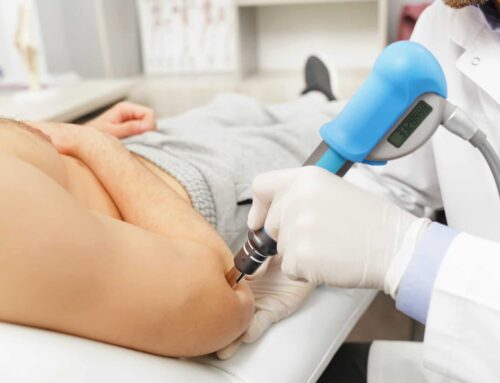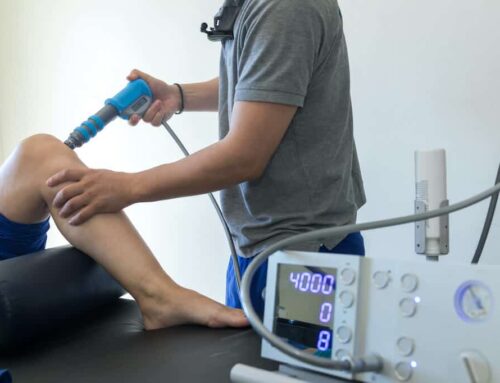Knee pain is debilitating and affects every aspect of your life. If you have looked for treatment and relief from your knee pain, chances are a total knee replacement has been suggested as a possible solution somewhere along the way.
The number of total knee replacements performed in the US is projected to reach almost a million this year (2020). Total knee replacements, or arthroplasties, are surgical procedures that smooth and replace the surfaces of the femur, tibia, and patella to decrease pain and improve function.
As physical therapists, we see numerous patients following their joint replacements. The unfortunate truth is that many felt they had very little knowledge of what happened during their surgery, what the recovery would truthfully look like, and what work would be required to achieve the outcomes they desired.
Prior to becoming a physical therapist, one of our PTs was a surgical technologist. That means they were the person in the operating room setting up the case, preparing the patient and surgical field, and aiding during the surgery. (Have you ever seen a medical drama where the doctor says “scalpel!” and holds out his or her hand? They’re the person passing the scalpel.)
Our PT was part of the team performing hundreds of total knee and hip replacements. The goal of today’s blog is to give an accurate representation of what should be considered when considering a total knee replacement so that patients have as much information as possible when making decisions regarding their knee pain.
Imaging And Total Knee Replacements
Osteoarthritis is one of the most common culprits behind knee pain. Osteoarthritis is when the joints appear to have some degree of degeneration due to wear and tear from years of use. This is most often discovered in an x-ray, demonstrating diminished joint space and bony changes.
However, x-rays and other imaging techniques are not necessarily a great indicator of pain or function. First, images are often taken with patients lying on a table. How many people have knee pain while lying down?
Similarly, images are taken when the patient is not moving. Often, it’s with movement that people have pain, so once again the amount of information we gain is limited. Lastly, things we see on imaging often do not correlate with pain. Studies show that up to 63% of people with abnormalities in their lumbar spine MRI have no pain. The truth is that anyone over the age of 30 will have some sort of degenerative changes after a few decades of fighting gravity. This doesn’t mean they will have pain in any of their joints!
Considerations Prior To Total Knee Replacement
There are times when a total knee replacement may be indicated. In these cases, there are several considerations. First, make sure you are doing your research and choosing a good surgeon. You should also always get a second opinion. Make sure your surgeon is aware of your functional goals other than just addressing your pain. It is important for her or him to know what activities you want to get back to following surgery. (This is true when selecting a physical therapist as well!)
Secondly, all options, risks, and side effects must be discussed and understood. Unfortunately, these variables are not always explained in detail and understood by patients considering surgery.
Let’s talk about one of the biggest considerations: pain. Total knee replacements are mostly advertised as solutions to knee pain. However, that does not necessarily mean you will be pain free following your surgery. Surgery is still trauma to your body. In order to get down to your bones, surgeons must cut through your skin, fat, and fascia, and muscle. All of these layers have nerve endings that are disrupted or damaged.
Secondly, total knee replacements are an aggressive surgery. Bones are meant to withstand a lot of force. Therefore, it takes a significant amount of force upon those bones to implant the total knee components. Oftentimes, people describe their pain after surgery as a deep ache; that’s from the nerves in the bone that were damaged by the implants.
Comorbidities and Recovery Times
There are many comorbidities that will affect recovery after a TKA. Diabetes, high blood pressure, and obesity will all decrease wound healing, prolong recovery, and can contribute to pain. These comorbidities and other risk factors should be discussed with your surgeon prior to deciding to have the operation. In addition, the recovery from a TKA will take several months. Your joint has to relearn how to move and regain its range of motion, your muscles have to relearn how to contract to move your joint, and your tissues have to heal. It is not a simple nor easy process and requires a lot of hard work from the patient.
Why Physical Therapy Is An Effective Alternative to Knee Replacements
Let’s go back to osteoarthritis for a second. Knee osteoarthritis is often accelerated when there is a small misalignment of bones within a joint that are constantly putting pressure on each other. Our muscles act in one big tensioning system; if one muscle is weak, other muscles will overpower it and pull from its attachments at our bones with too much force. This is why muscles get tight. Over time, this will cause uneven wearing away at that bone, creating bone and joint changes that can result in pain. Total knee replacements create new metal surfaces for the bones in that joint to glide on.
What total knee replacements do not do is address the muscle imbalances that contributed to the misalignment and subsequent wearing of the bone in the first place. In fact…
Total Knee Arthroplasty’s (TKA’s) must cut through or divide many of those muscles meant to help move our joint, causing trauma to the very tissue that supports and moves us.
So now those muscles that already weren’t working properly also have to heal from the damage they have undergone from surgery.
This is where physical therapy excels. As movement specialists, our entire approach is centered around fixing the root cause of your pain and not just treating the symptoms. Without correcting and training the muscles that support us how to contract and move appropriately, the solution to your pain is missing the most crucial variable; movement. Physical therapy takes into account alignment, muscle strength, flexibility, and muscle coordination to make sure we address every variable that is contributing to your pain.
Our goal as physical therapists is to get you back to your activity you’ve been missing out on due to your knee pain. We want to strengthen your muscles so that you can get back to golfing, hiking, playing with your kids, or whatever activities you enjoy. We want to help you correct the imbalances that may have been contributing to your joint pain so that you can be healthy, active, and mobile for years to come. Regardless of what your x-ray looks like.
Interested in finding out more? Still have questions regarding surgery or physical therapy? Click the button below to sign up for a free 30-minute discovery visit so we can talk to you one-on-one all of your options regarding your knee pain and get you back to what you love doing.




